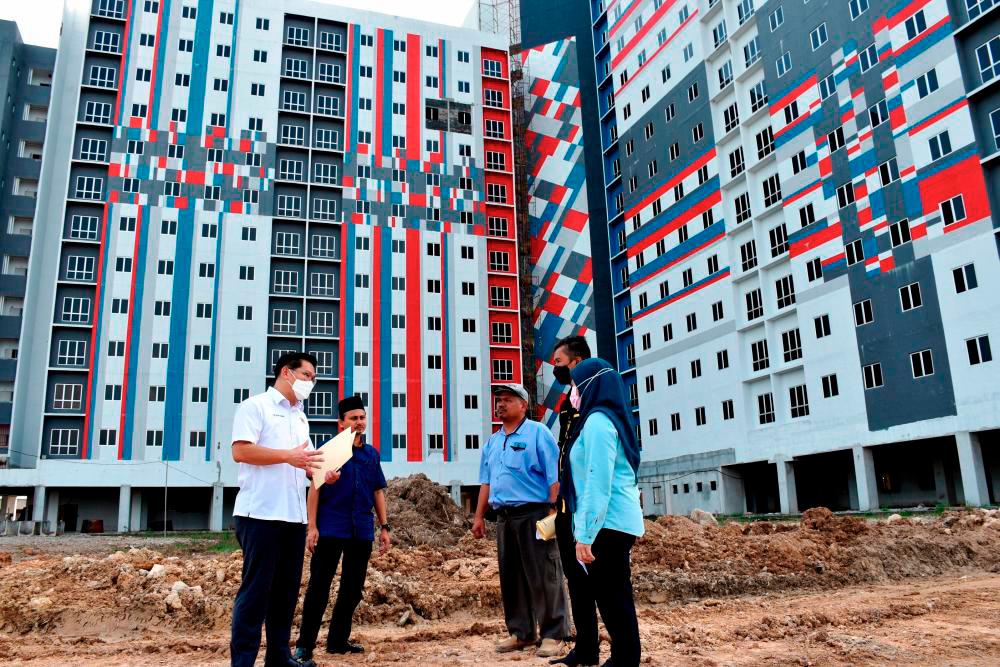PUBLIC housing is an essential component of a society that values the well-being and dignity of all its citizens. The provision of affordable, safe and decent homes is crucial in ensuring that everyone has access to a basic human right – a roof over their head.
The People’s Housing Programme (PPR) in Malaysia is one such initiative aimed at providing housing for the lower-income and hardcore poor groups. However, as the recent discussion around the state of PPR homes has highlighted, there are significant challenges to providing sustainable public housing solutions.
I recently had an opportunity to meet someone with an illustrious career in politics, serving various prime ministers and was now mostly involved in community service and voluntary work. During the gathering, our conversation veered towards low-cost homes, known as PPR or PPRT.
The PPR scheme is a government programme aimed at providing a decent dwelling for the lower-income and hardcore poor groups by relocating squatters and the homeless.
The National Housing Department, under the Urban Well-being, Housing and Local Government Ministry, is the leading implementing agency for PPR projects throughout Malaysia. In Kuala Lumpur, PPR consists of two categories – rented PPR and owned PPR.
All houses constructed under both the owned and rented programmes use the design specifications of low-cost housing set out in the National Housing Standard for Low-Cost Housing.
The rented PPR programme was introduced in February 2002, with the aim of providing affordable rental housing for target groups – low-income and squatters – at a rental rate of RM124 per month.
The government also implemented the owned PPR scheme, which aims to enable lower-income earners to have their own homes. Owned PPR houses were sold at RM35,000 to RM42,000 per unit, depending on the state and location.
The purpose of this article is to highlight the lively debate that took place between this guest and the writer, during which we expressed different points of view. He thinks the deplorable condition of low-cost housing is entirely the fault of the dwellers while I said it is the authorities’ lack of care that had led to the current situation PPR housing schemes are becoming a shame to the nation.
If you have visited a PPR, you may even wonder if such homes and their surroundings are habitable for human beings. I have been to many and my recent visit to the Subang Mewah PPR inspired me to write this article.
To begin with, most PPR flats are devoid of basic cleanliness and are a perfect trap for the breeding of all kinds of diseases. Rubbish is strewn everywhere, trash uncollected, walkways scattered with discarded items and cigarette butts etc.
Then, there is the perennial problem with lifts. The low-cost flats are the perfect grounds for vandals to fester and thus result in rampant damage of public facilities. The local authorities or the developer who is entrusted to manage and maintain the flats are unable to cope as the extent of damage is far greater than the cost of repairs and rectification.
Lift breakdowns are common and have been happening in this particular block in Subang Mewah PPR flats for a year now. There is only one lift out of two serving 11 floors and even that one functioning lift does not stop on many floors. The buttons are missing or have been pulled out from the socket.
Other problems plaguing PPR flats are missing or damaged common area lights, poor garbage collection or disposal and theft of vehicles and other personal belongings. Social problems, such as drug peddling and abuse, are also widespread.
These issues are not new and it is not that the local authorities do not know about them but reactive actions will not solve these problems. There must be a revolutionary plan to address them at the root level, which should involve a combination of education, awareness and punitive measures.
Meanwhile, the relevant authorities must step in to keep basic facilities, such as lifts, functioning and cleanliness well managed.
There must be ownership from multiple agencies and the NGOs can be roped in to hold long-term programmes and activities with clear goals and measurable KPIs (key performance indicators).
This is easier said than done, and the politicians who can bring about a massive change in these areas are busy with their business of the day.
In the end, Tuan Haji and I decided to meet midway and agreed that issues at PPR flats involve both public apathy and a lackadaisical attitude of the authorities.
In sum, the issue of public apathy must be addressed. The notion that the state of PPR homes is solely the fault of the dwellers is unfair. While it is important for inhabitants to take care of their homes and maintain cleanliness, it is also crucial for the authorities to provide an environment that is conducive to healthy living.
Comments: letters@thesundaily.com










